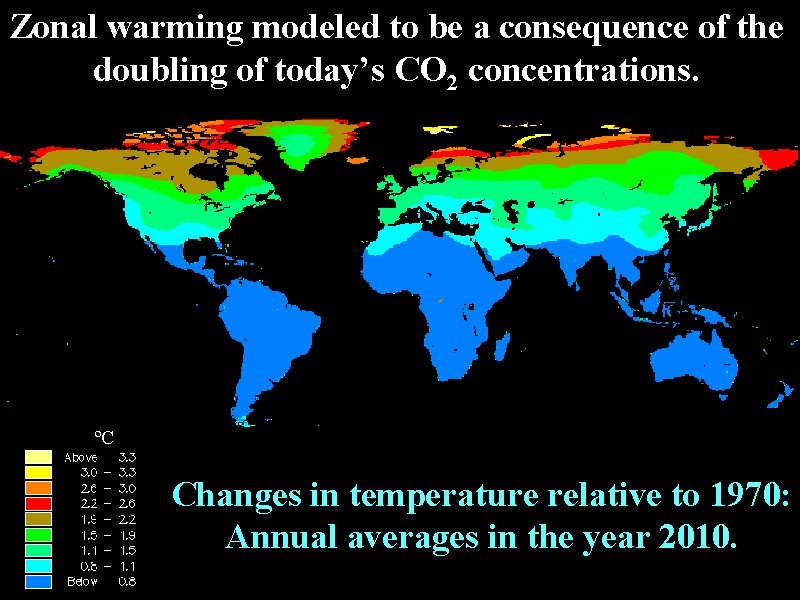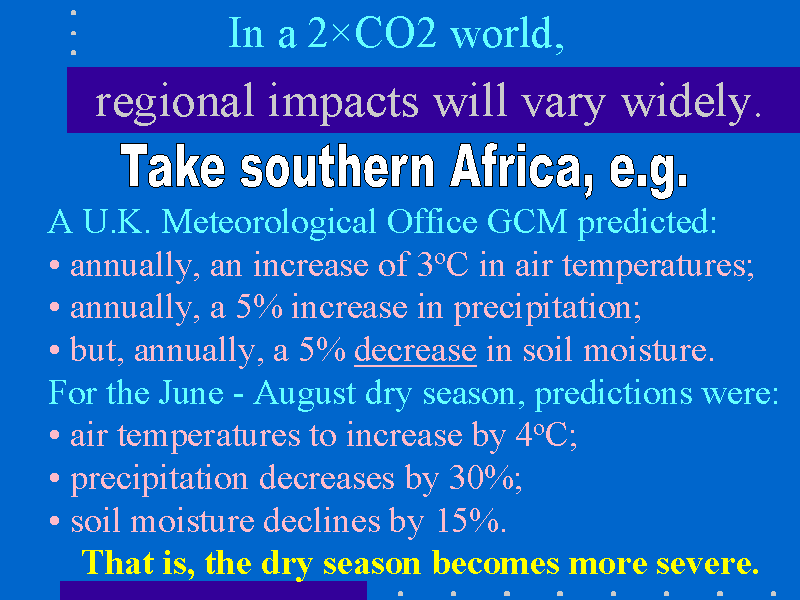
The Earth's Drylands and Global Warming

The question of how global warming will impact the Earth's drylands then becomes an issue of interactions among (1) plant fertilization by the enhanced levels of carbon dioxide, which could result in greater retention of soil moisture because stomates would not have to remain open as long, and thus evapotranspiration may decline; (2) precipitation; and (3), maximum soil surface and (chart below) air temperatures.

The chart below shows, on a much finer spatial scale than the zonal warming predictions above, NASA's predictions for temperature and precipitation changes if carbon dioxide levels increase at a rate of one percent per year.

However, consideration of precipitation and temperature changes alone is insufficient: changes in potential evaporation are likely to be the dominant climate forcing factor for drylands. An increase in potential evaporation may exceed the modeled increase in precipitation, thus causing a decrease in soil moisture. These relationships were modeled by the U.K.'s climate prediction center (Mitchell, 1992) for southern Africa, and indicate that the region may become more arid.

References
Mitchell, J.F.B., 1992. Simulated climate and climate change over
southern Africa in high-resolution atmosphere/mixed-layer ocean model
experiments. Hadley Centre Internal Note 18.
 Return to Deserts of the World
Return to Deserts of the WorldThis site last updated April 14, 1998